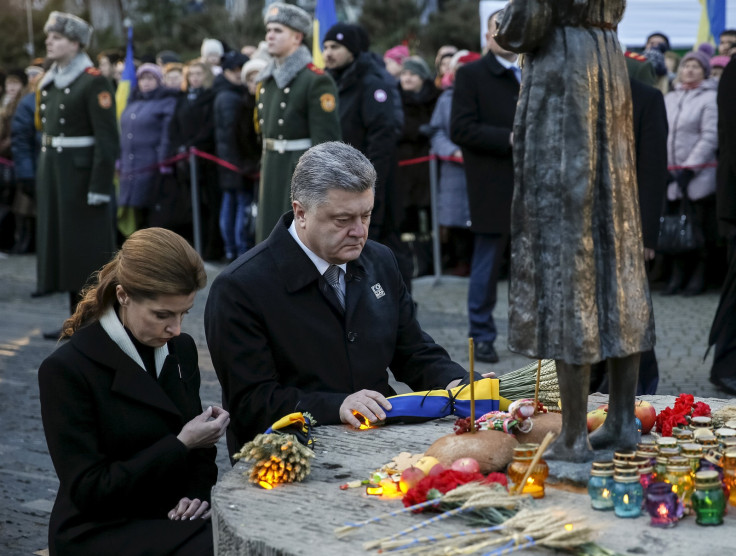Ukraine remembers Stalin's Holodomor starvation genocide
In 1932-33 Joseph Stalin starved millions of Ukrainians to death.

This weekend, Ukraine is marking the anniversary of the Holodomor — a man-made famine in the early 1930s which killed up to 7.5 million people.
Between 1932 and 1933, a famine struck the grain-producing states controlled by Joseph Stalin's Soviet Russia at the time.
But academics believe Stalin used the famine as a way to destroy the movement for Ukrainian independence. The Soviet government, which was controlled by the murderous dictator Stalin, refused outside aid, confiscated food from Ukrainians and restricted movement, stopping the famine's victims travelling to areas where food was available.
In 2010, the Court of Appeal in Kiev ruled that 3.9 million people died as a direct result of starvation. However, some researchers have said that evidence points to 7.5 million people being killed, although the exact number is impossible to determine, due to lack of birth and death records.
The Holodomor was created by Stalin's introduction of Collectivisation into the Soviet Union. Farmers in the Ukraine, and across the USSR, were forced to stop growing and harvesting grains, and instead focus on growing crops such as sugar beets and cotton. Collectivism was especially unpopular in the Ukraine, which helped the growing agitation for independence in the region.
In order to strangle the independence movement in its infancy, Stalin made it illegal for Ukraine's farmers to own food. Soviet troops roamed the country, seizing food and livestock kept by farmers, executing anyone who had even a morsel of food in their homes.
The few farmers who were permitted to grow grains were then preventing from harvesting them, or found their grains was left rotting in fields or lost after harvest.
Russia government has never admitted responsibility for the massacre. It was the official policy of the USSR that the 1932-33 famine – let alone the Holodomor – never occurred. This denial was backed by some Western journalists, including the Nobel prize-winning writer, and Stalin sympathiser, George Bernard Shaw.
But the famine was felt across the USSR. However, more than 75% of those who died during the famine were from the Ukraine.
Remembering the Holodomor
Since 2006, Ukraine has recognised the Holodomor as a genocide of native Ukrainians carried out by Soviet Union. Fourteen other countries – including Canada, the Vatican, Mexico, Columbia and many Central and Eastern European nations – also recognise the Holodomor as a genocide.
The US and Western European states do not, instead classing it as a mere criminal act by Stalin's regime.
Since 2006, when Ukraine broke away from Russian control, the country began marking Holodomor Remembrance Day in late November. This year, the country held National Holodomor Awareness Week, between 21 to 27 November.
This weekend, President Petro Poroshenko and his wife Maryna, laid flowers at a memorial to the Holodomor's victims, in Kiev.
In a statement on Facebook, Poroshenko wrote, "We must fulfil a sacred duty to the memory of millions of Ukrainians who were tortured by famine - to preserve united and independent Ukraine."
At 4pm (local time), Ukrainians will light candles in memory of those killed.
Ukranians who remain in Crimea – which Russian military still controls – could face jail if they mark the Holodomor, as this is regarded as a crime in Russia.
© Copyright IBTimes 2025. All rights reserved.





















